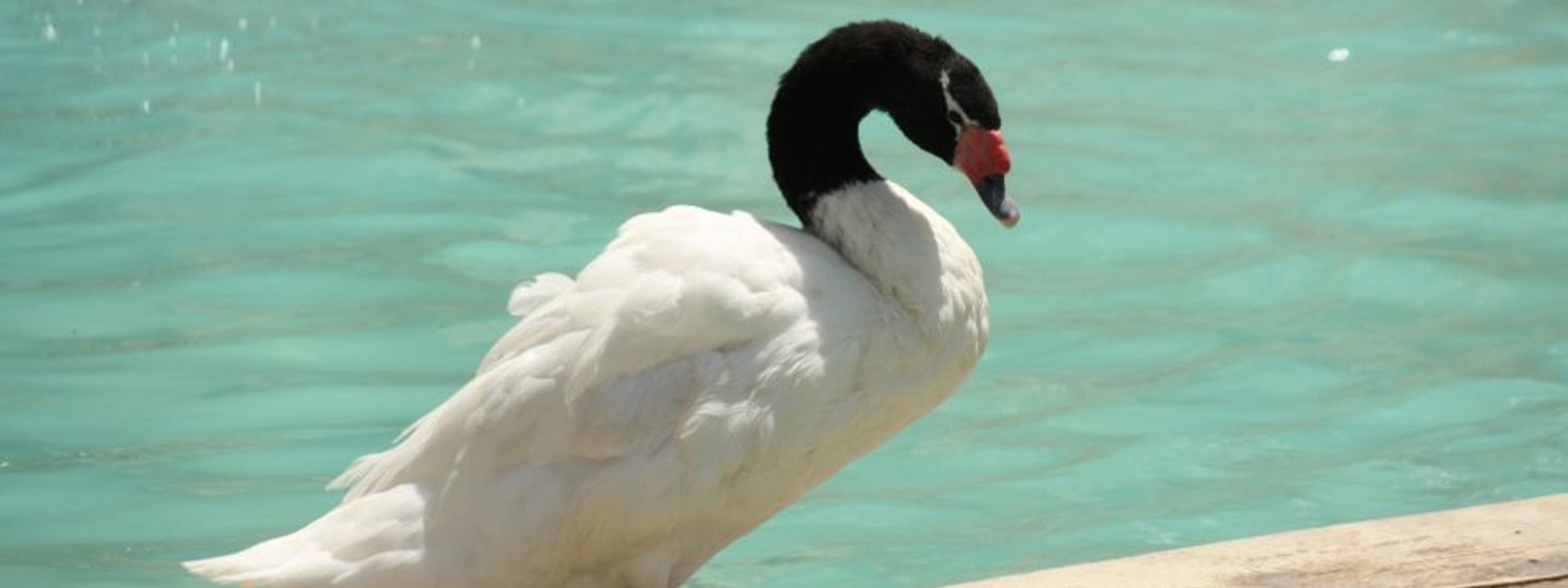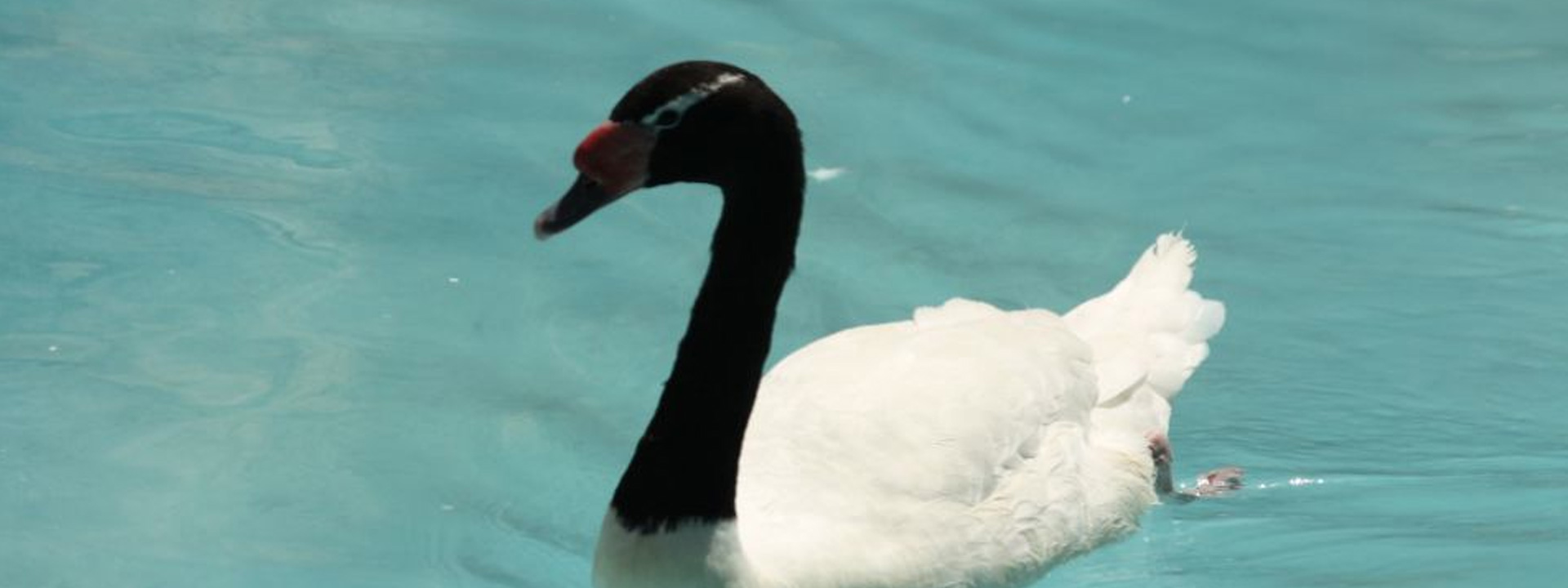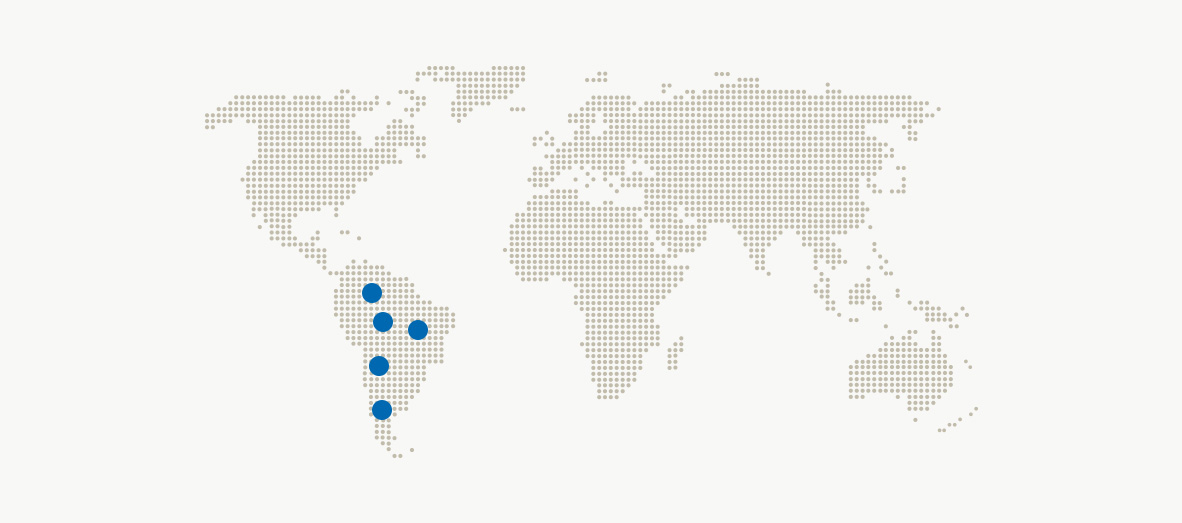


Black-necked Swan
Cygnus melancoryphus
The black-necked swan (Cygnus melancoryphus) is a species of bird anseriforme’s own family Anatidae of South America for its distinctive black head and white neck and body.
Species
C. melancoryphus
Order
Anseriformes
Family
Anatidae
Danger of Extinction
Amenazada (vulnerable)

Features
No sexual dimorphism in plumage, being larger than the male and female. Once they are adults, the plumage of the head and neck is black except for a white stripe that runs from the peak to the center of the eye and extends to the back of the head. The rest of the plumage is white. The facial skin is red like the wattles that grows on the peak. The legs are pink.
Moult annually at the end of breeding season and before the northward migration. Lives in captivity about 7 years, there are records of 20 years of life.
Customs, food and habitat:
Inhabits ponds and lakes of fresh or brackish water and on the shores of the sea. It frequents marshes and ponds where algae and plankton grows. It is a water bird if it is compared with other swans. Spend most of the time in the water, finding it difficult to walk. Ranked environments from sea level to 1,200 m altitude.
Their geographical distribution is from southern Brazil to Tierra del Fuego. In spring and summer breeding in southern Chile, Paraguay, Argentina and Uruguay. It also breeds on the Falkland Islands. During this season some individuals reach the Beagle Channel south of Isla Grande in Tierra del Fuego and the Chilean Juan Fernandez archipelago. In winter it migrates north, being more abundant in Paraguay and in Rio Grande do Sul, Santa Catarina and Parana Brazil
They feed on algae and aquatic plants, invertebrates and insects also. Filtered water; introducing her peak in shallow places and opens and closes slightly, causing the water to circulate inside. Other times you enter the head and neck in the water while the body remains on the surface.
The flight is vigorous, making long journeys. It costs start flying and land on water. The sound they make when they swim or fly both is like a whistle.
Curiosities
Swans are monogamous, once couples are, join her for life, and if one of them dies, the other refuses to find a new partner.
The nest is made with grass, on the margins of lakes and ponds. Lays three to seven eggs, cream colored female incubates for 34-36 days. The male is about defending the nest, with fierce attacks on animals to eggs or chicks approaching. Captive breeding smoothly.
When you are born all white plumage, beak and legs are dark bluish gray. The birth feathers are replaced by chestnut feathers clear. The neck begins to darken when you are the size of adults. At one and get the white plumage and black neck wattles but on the peak was not developed until three or four years.
Youth flock to the back of the adult swans and other species of the genus, hiding under the wing when there is danger.

